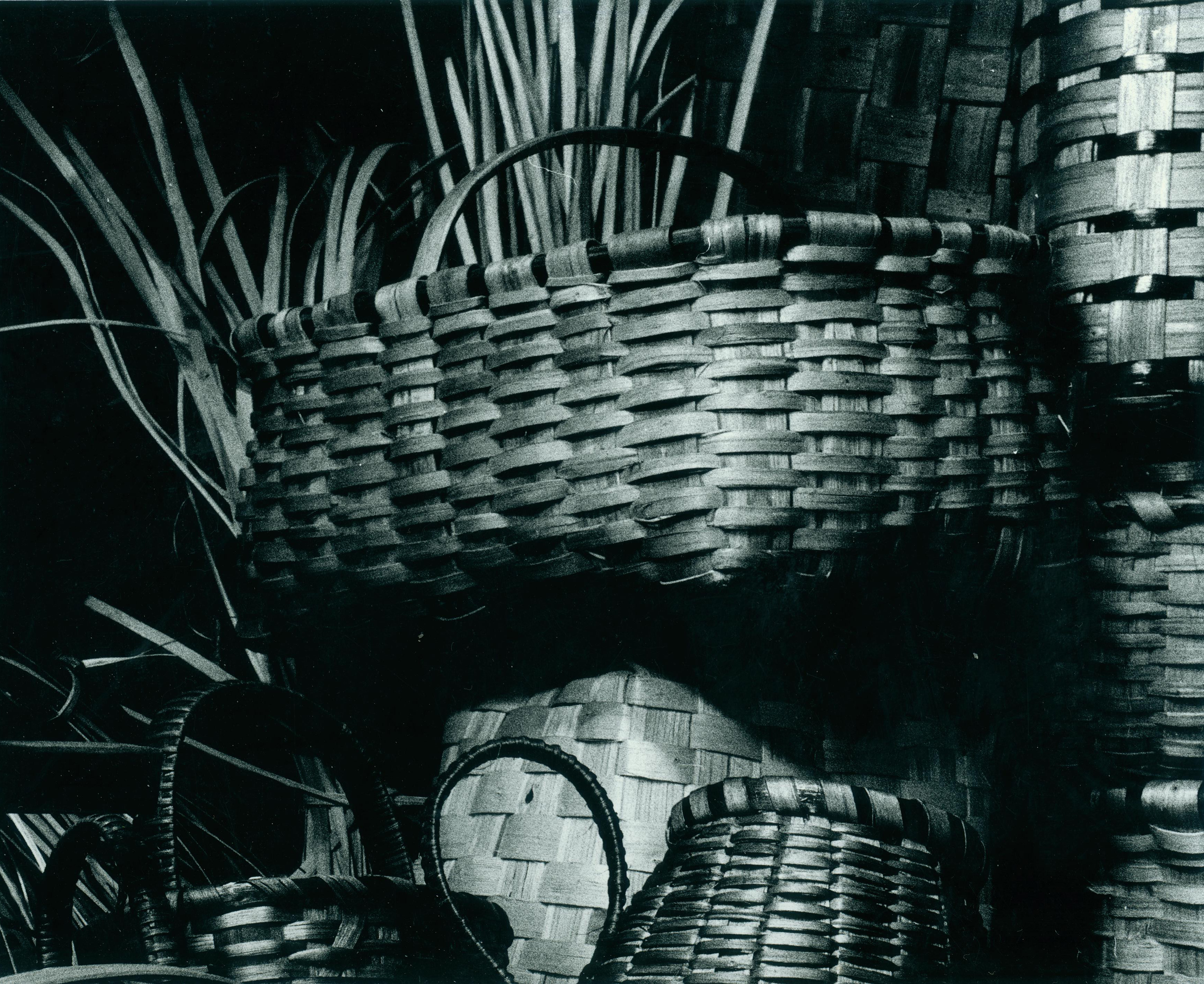Basque ethnography at a glance

Display of baskets. Akaitze Kamiruaga. Labayru Fundazioa Photographic Archive.
Taking up where we left off in the previous post, we shall proceed to detail certain particulars about the art of basketry in the Basque Country, starting with the selection of raw materials and continuing with the manufacturing technique.
Chestnut was the preferred wood by Basque basketmakers, other types of trees being also used, depending on the piece. For instance: ash was more suitable for weaving chair seats, alder and pine for chair legs, and labrusca or wild grapevine —known as txori-mahatsa, literally ‘bird grape’— for fish traps. (more…)

Julián Redondo. Labayru Fundazioa Photographic Archive.
At this very difficult time that we are living in, the coronavirus spreading everywhere, people suffering severe confinement in their homes, and many of us having resorted to telecommuting as the better choice to continue with our jobs and activities, we wish to recall an age-old trade, which although practically lost today, like many other types of arts and crafts, would also be pursued at the artisan’s home workshop.
We are referring to basketmakers, otzaraginak, otzaragileak or zesteruak, who generally, to a greater or lesser extent, combined their handicraft with agricultural and farming chores, and transmitted their know-how from generation to generation. (more…)

Entering church. José Arrue. Digitized postcard. Labayru Fundazioa Photographic Archive.
In order to describe the culture of a people, besides observational or field research, a study of the farthest-distant past is likewise needed, as depicted in historical documents, engravings or paintings, as well as in the testimonies of geographers, historians or travellers.
The institution I work for, which not by chance takes the name of a renowned Basque historian, houses a library on Basque themes, featuring some remarkable works from, among others, an ethnohistorical standpoint. A glance through their pages indeed suffices to captivate the attention of not such a great expert on ethnography like myself. May the following lines serve as illustration. (more…)

Saint-Martin-de-Seignanx. Landes, c. 1900. Archives Départementales des Landes [Departmental Archives of the Landes].
A terrifying report saw the light of day on the front page of the Madrid daily La España on 18 April 1858, published from 1848 to 1868 with the support of Pedro Egaña, an Álava native entrepreneur, and the Navarrese politician and writer Francisco Navarro Villoslada, leading representatives of ultraconservatism in 19th-century Spain:
By a witch
According to news from Bayonne, the village of Saint-Martin, a league distant from the mentioned city, has been the scene of a double crime which has caused deep distress among its peaceful inhabitants. (more…)

